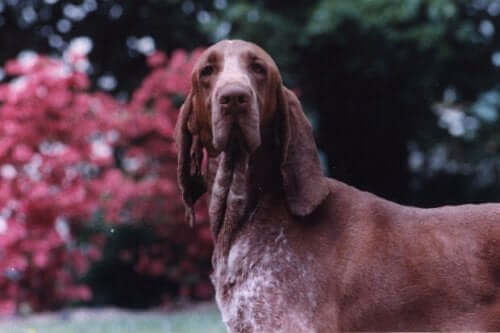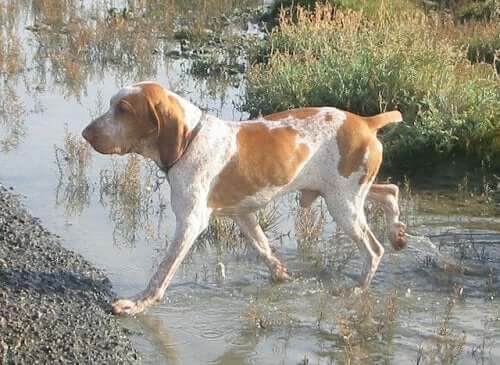The Legendary Italian Pointer

The Italian Pointer is one of the oldest breeds on the planet. There are many amazing stories about them, and they have a reputation for being both excellent company and hard workers. Today, we’ll tell you all about their history and features and some of the more interesting facts about them.
Robust and athletic
It’s believed that the Italian Pointer has been living alongside humans since the Middle Ages and that its closest ancestors are the Bloodhound and the Asian Mastiff. In a very short period of time, the Italian Pointer began to dominate the Italian mountains and countryside.
It was the animal of choice for all noblemen in the various Italian kingdoms until the 19th century, then the English introduced other breeds to the various courts.
Just like with other breeds, the wars and conflicts of the 19th and early 20th centuries led to their near disappearance. Luckily, the efforts of Italian breeders and protectors managed to keep the breed alive and preserve their original appearance.
Physical features of the Italian pointer
Like any hunting dog, the Italian pointer has certain typical physical features:
- They’re big. They measure between 21 and 26 inches in height and can weigh between 55 and 88 pounds.
- They have a very muscular and athletic body which is ideal for either flat or rocky areas. This helps them to move quickly when hunting.
- They can adapt to almost any hunting role. For centuries they were used for hunting quail and other small birds. However, these days, they’re used more as gun dogs.
- They have a large head with a long snout, a black nose, large upper lips, and big droopy ears.
- They have long legs in proportion to the rest of their body. Their tails are often cut for aesthetic reasons, though this practice is forbidden in many countries today.
- Their coat is normally quite short, thin, and white with various-sized color patches all over the body.
- They take steady, long strides and are always maintain a hunting posture.
- They have short but strong nails and their toes are close together.

There are several institutions that have officially recognized the breed. Federation Cynologique Internationale (International Cynological Federation) catalogs it in Group 7, Section 1 for Continental Pointing Dogs. The Kennel Club and the United Kennel Club have also added the breed to their catalog.
Behavior of the Italian pointer
These dogs are normally very easy to train since they’re quite intelligent and loyal to their owners. They’re trained for long-term physical work such as cross-country pointing and tracking animals or people.
But this doesn’t mean that they’re not sociable. They can be very docile and friendly, which makes them a great dog for the family. However, if they get bored or don’t get enough exercise, they can get restless and bark a lot.
Health and care
Because of their strong build and the work they do, the Italian pointer tends to enjoy excellent health and is not prone to any diseases in particular. However, they can suffer from hip or elbow dysplasia, so be sure to take yours to the vet for a regular check-up.
With regard to their hygiene, it’s important to regularly clean their ears to avoid any fungus. Their legs should be cleaned regularly too to get rid of parasites, thorns, and other things that might hurt them. Pay special attention to ticks since these can pass on infections.
All this is necessary because it’s a working dog. Their lifestyle means they spend a lot of time outdoors and exposed to all these annoying inconveniences.
Finally, it’s important to brush their fur with a soft brush to get rid of any excess hair. This will keep their coat nice and soft. But only bathe them when absolutely necessary!